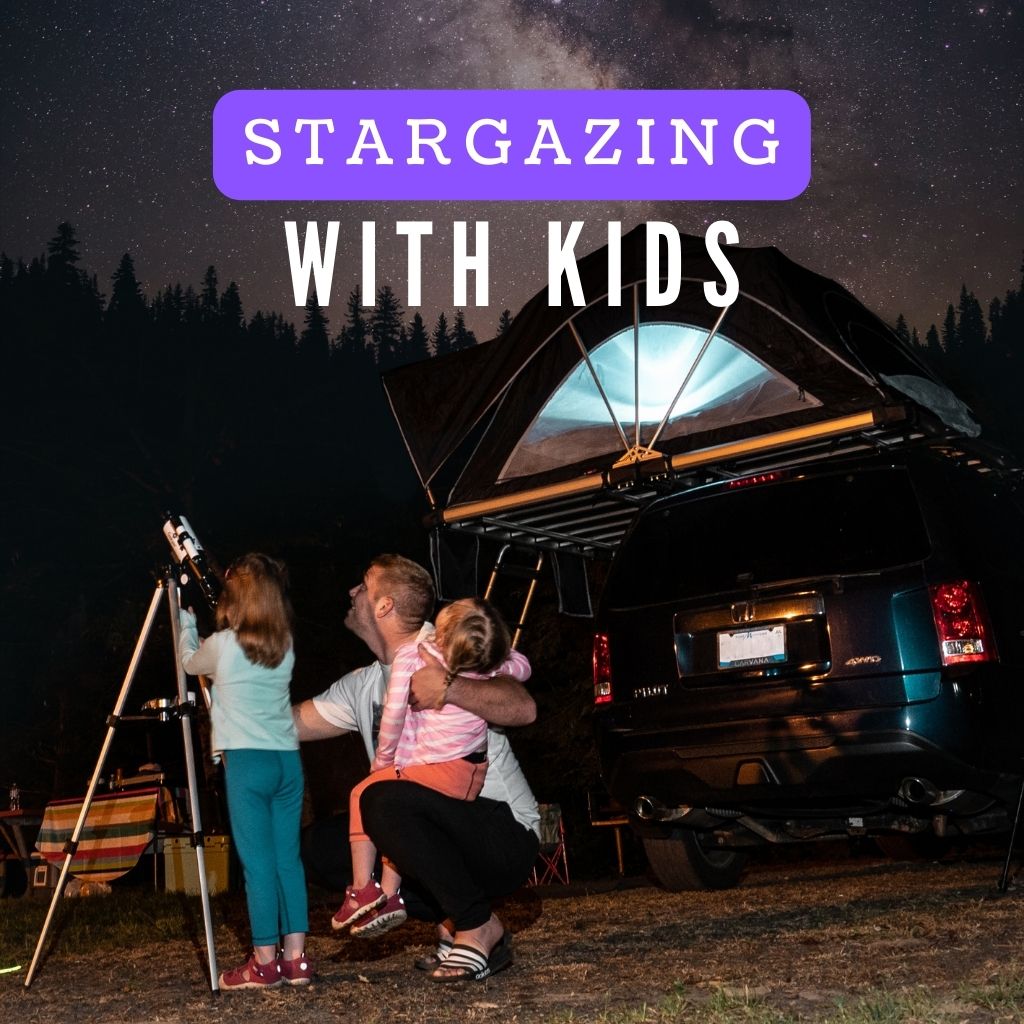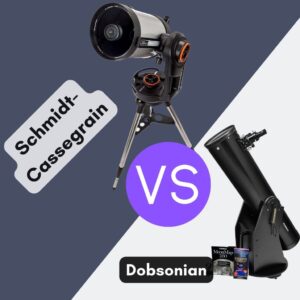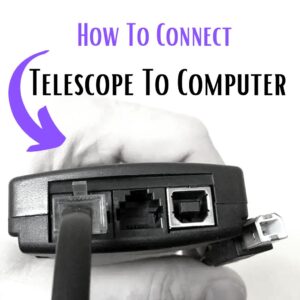This site contains affiliate links to products. I may receive a commission for purchases made through these links.
Stargazing can be an educational experience that introduces kids to basic astronomy concepts in an engaging way. It can also be a great bonding activity for families and inspire an interest in science and space.
For young stargazers, navigating the celestial world is half the fun, and the experience of a clear night under the stars can ignite a lifelong passion for astronomy.
But as you step into the darkness to explore the constellations and catch glimpses of shooting stars, ensuring the experience is both safe and exciting is paramount.
This guide provides essential advice on creating an enjoyable and safe stargazing experience for kids.
Here’s how to make it exciting and encourage their curiosity:
Promote early enthusiasm
To spark a child’s interest in the stargazing adventure, you need to incorporate several activities and resources to engage their curiosity.
You should consider the following:
1. Introduce them to the night sky
Before you start stargazing with kids, introduce them to the night sky, stars, and constellations.
Consider utilizing resources like the National Geographic Backyard Guide to the Night Sky. It offers vibrant visuals, sky maps, and engaging information.
You can also use captivating documentaries to spark their interest, laying a solid foundation for their stargazing journey.
For top-notch recommendations, check out: 33 Best Space Documentaries (Must Watch!)
2. Assign astronomy books for kids
Prior to your stargazing adventure, assign astronomy books to children. This encourages them to delve into the world of stars, planets, and galaxies before venturing outdoors.
3. Watch space movies suitable for children
Incorporate space-themed movies for kids into your stargazing preparations. These films not only entertain but also educate kids about the universe.
4. Engage in space crafts
Before you embark on the journey, enhance the stargazing experience by engaging in space-themed crafts with kids. Crafting allows them to express their creativity while reinforcing their interest in astronomy.
5. Organize space-themed games
Organizing space-themed games can add an exciting and educational dimension to the experience for kids and make them anticipate the stargazing adventure.
Make appropriate pre-stargazing plans
Making appropriate pre-stargazing plans involves the strategic preparation and organization necessary for a successful and enjoyable stargazing experience with children.
These pre-stargazing plans aim to create a seamless and educational stargazing adventure for kids.
It involves the following:
6. Select an ideal location free from light pollution
City lights can obstruct the view of celestial objects. Opt for a location that is far from the bright lights of urban areas. Seek out remote spots where the natural darkness reveals the beauty of the Milky Way, the North Star, and other celestial phenomena.
Safe, open spaces such as national parks or expansive fields are excellent choices.
You may also like:
- From Coast to Coast: 31 Best Stargazing Locations in the US
- 31 Best Stargazing Spots in the World: Spectacular Night Skies
7. Choose the right timing for celestial events
For a memorable stargazing adventure, time your outing to coincide with celestial events like meteor showers or passages of the International Space Station and other bright satellites.
Consult online astronomy calendars to stay informed about these occurrences.
Opt for a quarter-moon night, where the subdued lunar glow allows the stars to shine brightly.
8. Opt for secure locations
Safety is paramount when stargazing with kids. Opt for secure and familiar locations, ensuring the environment is safe for the young kids.
Equip them with red-filtered flashlights, such as the Black Diamond Spot Headlamp, for night vision.
Emphasize the importance of staying together as a group to ensure everyone’s safety during the stargazing expedition.
9. Choose a clear night for stargazing
Select a clear night for your stargazing adventure to ensure optimal visibility of stars, planets, and other celestial bodies. Check weather forecasts in advance, planning the outing accordingly to avoid cloud cover or inclement weather.
This ensures a fruitful and enjoyable stargazing experience, free from weather-related hindrances and offering uninterrupted celestial explorations.
10. Gather your stargazing supplies
Before embarking on your stargazing adventure with kids, it’s essential to gather all the supplies you’ll need to ensure a comfortable and enjoyable experience.
Here’s a checklist of some must-have items to consider:
- Blanket
- Folding Chair
- Torch Light (with red filter)
- Snacks
- Bug spray
- Notebook and Pen
- Compass
- Sky map
11. Select a child-friendly telescope or binoculars
Choose an easy-to-use telescope like the Celestron 70mm Travel Scope. A suitable telescope for a young child allows detailed views of the moon, planets, and stars.
Read also: Celestron Vs Nikon Binoculars: A Comparative Review Based on Customer Feedback
When choosing binoculars for kids, look for the ones with lower magnification (e.g., 7x or 8x) and a wide field of view, such as the Celestron Kids Binoculars. This allows for easier scanning of the night sky and a more user-friendly experience for children.
For additional choices of telescopes designed for kids, read: 11 Best Telescopes for Kids in 2023 (Sorted by Age).
Enrich the stargazing experience
You should enhance the quality and depth of a stargazing outing with children. By incorporating various engaging elements that aim to foster a lasting curiosity and passion for the universe.
Here are some activities to consider:
12. Engage in celestial photography
Introduce children to astrophotography, allowing them to capture the celestial wonders they observe. Provide them with a basic camera like the Nikon COOLPIX B500 and a tripod, encouraging them to photograph the stars, moon, and planets.
This activity not only fosters a love for photography but also serves as a visual journal of their stargazing adventures, making the experience even more memorable.
13. Leverage interactive technology
Enhance the experience by utilizing astronomical apps like Star Walk 2. These apps provide interactive sky maps, aiding in identifying various celestial bodies and constellations.
This technology helps children learn more about the universe, turning the stargazing adventure into a comprehensive educational journey.
It keeps kids interested and engaged, providing a hands-on learning experience in astronomy.
You can download Star Walk 2 from the Google Play Store and App Store.
14. Incorporate fun space activities
To keep the young stargazers interested and engaged throughout the adventure, incorporate fun and educational activities. Organize quizzes or scavenger hunts targeting specific stars, constellations, or planets.
These activities not only enhance their observational skills but also make the learning process more enjoyable and interactive, ensuring their continued interest in stargazing and space exploration.
If you’re looking for enjoyable fun space activities to include, check out: 47 Space Activities for Kids to Fuel Their Love for Science.
15. Introduce the concept of celestial navigation
Teach kids the art of navigating using stars like the Big Dipper and Ursa Minor. Understanding these constellations enriches their astronomical knowledge and instills practical navigation skills.
This education enables them to identify various celestial bodies, enhancing their stargazing experience and providing valuable life skills in understanding the world around them and the universe above.
If you happen to be in an urban area with significant light pollution, it may be challenging to see the brightest stars.
To overcome this obstacle and enhance your stargazing experience, it’s helpful to learn to identify specific celestial objects, such as the North Star, by using prominent constellations like the Big Dipper and Ursa Minor as reference points.
You may also like: Exploring the Little Dipper Constellation: Facts & Legends
16. Encourage documentation
Encourage children to document their celestial discoveries by providing notebooks or sketchbooks. This exercise fosters their imagination and observational skills, promoting a deeper engagement with the stargazing experience.
It helps in understanding the night sky better, enhancing their ability to identify stars, planets, and other celestial entities, making the adventure more educational and meaningful.
17. Utilize laser pointers
Introduce laser pointers as tools for precisely locating celestial objects, with a strong emphasis on their safe and responsible use. Using laser pointers correctly enhances the educational value of the stargazing experience.
They can help in clearly indicating and highlighting stars, planets, and constellations, ensuring a thorough and comprehensive learning experience in astronomy for young stargazers.
Consider the Celestron StarPointer Pro Finderscope. It’s a reliable choice for safely pointing out celestial objects during stargazing sessions.
18. Demonstrate how to observe the sun safely
Teach kids to safely observe the Sun with solar viewing glasses like Eclipse Glasses. Understanding solar behavior and its impact on the Earth is essential.
This activity is not only fun but also educational, offering insights into the solar system and fostering respect for the Sun’s powerful rays, ensuring safe and informed solar observations.
19. Explore the lunar cycle
Engage children in an exploration of moon phases, helping them connect the lunar cycle with its visual appearance in the night sky. Utilize a moon calendar or a mobile app to monitor its phases.
This activity encourages an appreciation for the natural world, the lunar cycle’s influence on Earth, and a deeper understanding of celestial mechanisms and their impact on our planet.
20. Teach your kids respect for nature and the environment
Instill a respect for nature and the environment in young stargazers. Highlight the importance of leaving no trace at stargazing sites, ensuring the preservation of these natural spaces for future exploration and enjoyment.
This lesson in environmental responsibility enhances their respect for the Earth, promoting sustainable and conscientious stargazing adventures.
21. Utilize step stools or elevated platforms
Ensure young children have an unobstructed view of the night sky by providing step stools or elevated platforms. This arrangement guarantees that even the smallest stargazers can explore celestial objects high overhead.
This enhances their experience and ensures everyone fully participates in the stargazing adventure.
22. Engage the kids with cosmic tales
Engage children with stories about stars, planets, and constellations. Share mythological tales or scientific facts about celestial bodies, captivating their imagination and enhancing their astronomical knowledge.
Storytelling adds a layer of enjoyment and education to the stargazing experience, deepening their understanding and appreciation of the celestial world.
23. Emphasize the importance of patience for the night sky
Teach children the importance of patience in stargazing. The celestial world unfolds gradually, requiring time and patience for the best experience.
Instilling this value ensures a more enjoyable and rewarding stargazing experience, fostering a calm and composed approach that will make it worthwhile to stay up past bedtime.
24. Play music
Enhance the stargazing atmosphere by playing space-themed or classical music softly in the background. The music can add an emotional and artistic dimension to the experience, making it even more memorable.
25. Organize a post-adventure discussion
End the stargazing expedition with a reflective discussion about the observed celestial bodies and events. Reviewing and discussing these experiences reinforces the learned concepts, fueling further curiosity and interest in astronomy.
This discussion allows children to share their observations, questions, and thoughts, promoting a deeper understanding and continued learning of the celestial world.
Takeaway: Utilize these 25 essential tips to ensure a delightful stargazing experience with kids
Stargazing with kids offers a unique opportunity for both education and family bonding. It introduces children to celestial objects and ignites a passion for astronomy and space exploration.
This guide has provided invaluable tips for a safe and exciting stargazing adventure with kids, from making suitable preparations to selecting the right equipment and engaging in educational activities.
Make the most of these crucial tips and cultivate a strong interest in space exploration among children.
You may also like:








